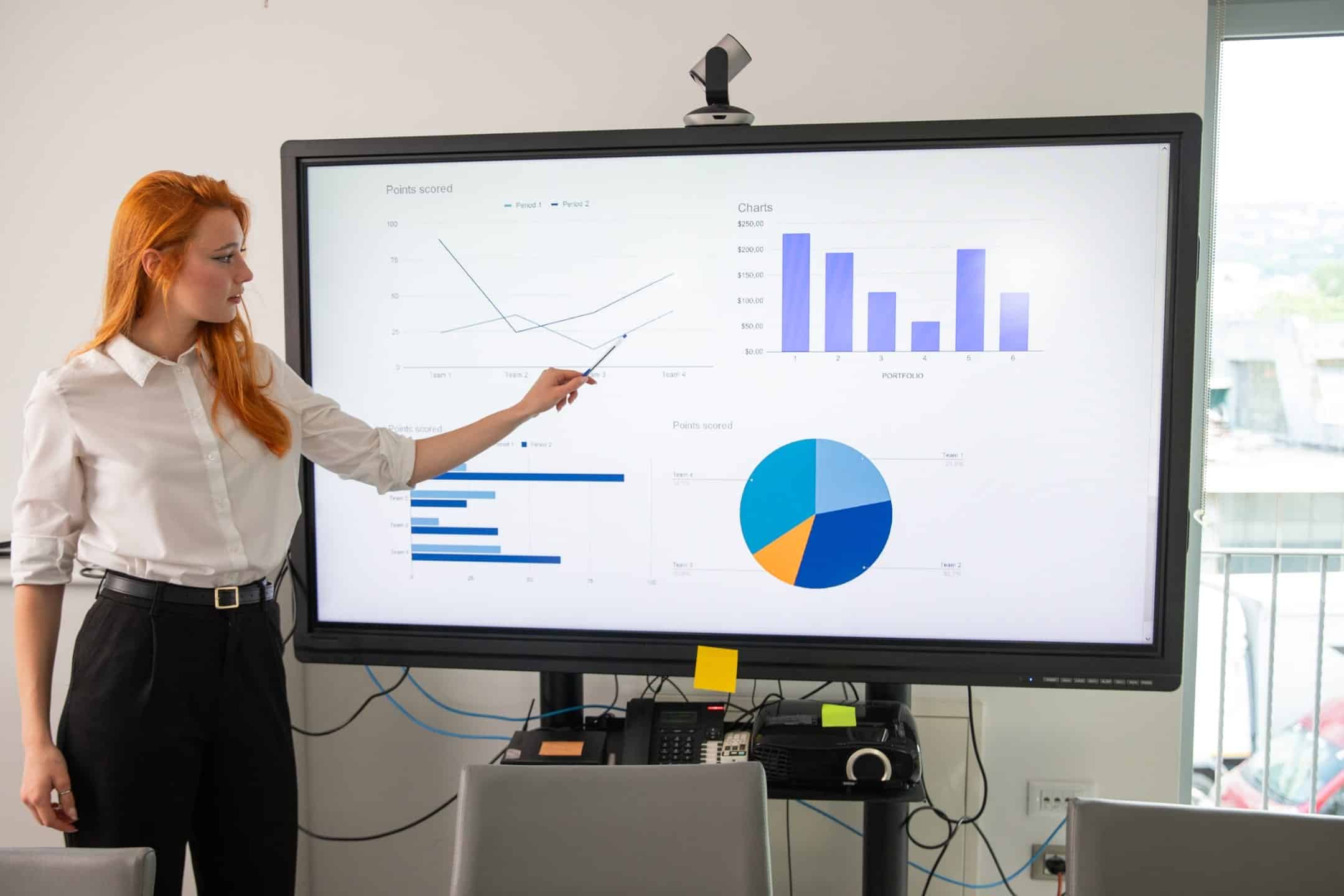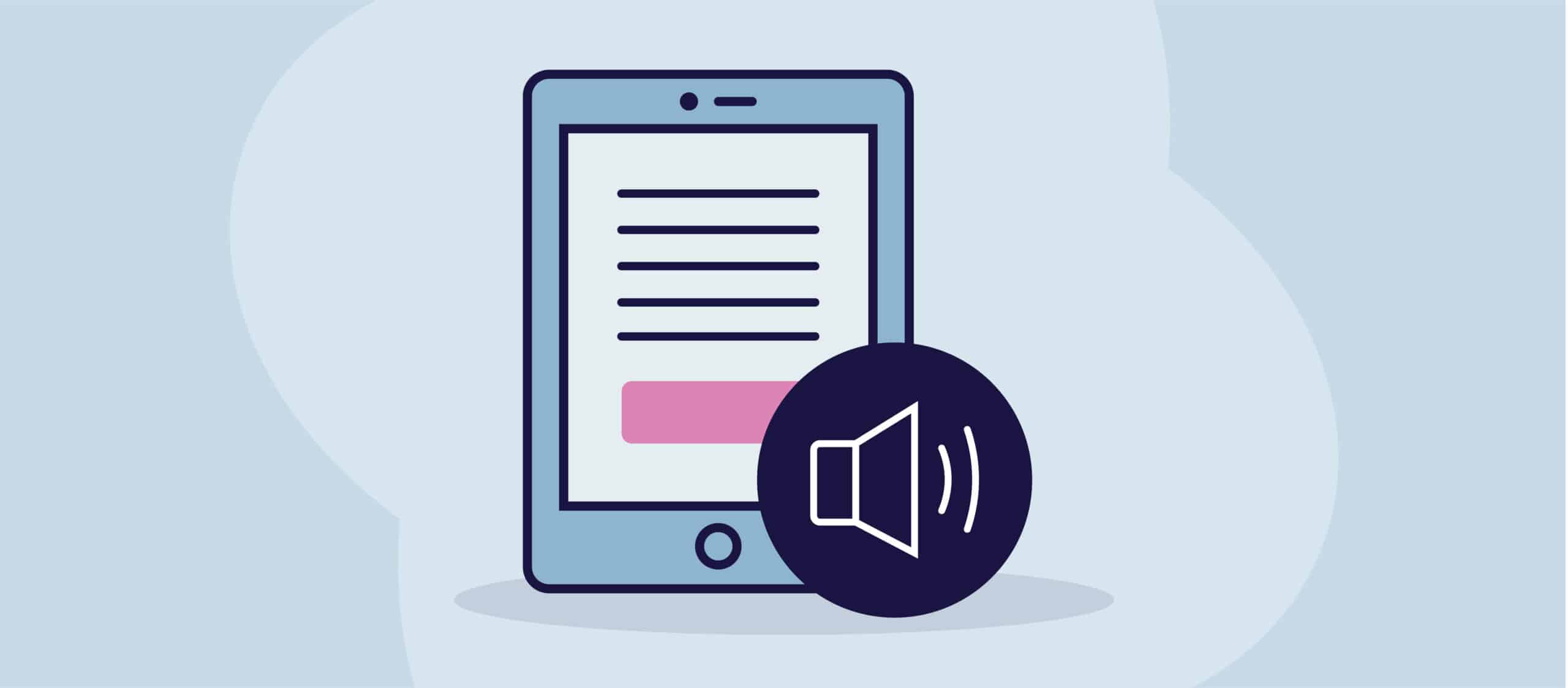Innledning
Digital tilgjengelighet har blitt et kritisk globalt tema i takt med at stadig mer av hverdagen vår, fra arbeid og utdanning til sosialisering og underholdning, foregår på nettet. Det anslås at 1 milliard mennesker verden over lever med en eller annen form for funksjonsnedsettelse, og det er derfor ikke bare et juridisk og etisk ansvar, men også et moralsk ansvar å sørge for at digitale plattformer, nettsteder, apper og innhold er tilgjengelig for alle. Etter hvert som bevisstheten om hvor viktig det er å skape inkluderende digitale miljøer øker, tar myndigheter og selskaper over hele verden grep for å fremme og håndheve digital tilgjengelighet.
Målet med denne artikkelen er å utforske den globale innsatsen som gjøres for å øke bevisstheten om digital tilgjengelighet, ved å se på initiativer fra internasjonale organisasjoner, regionale myndigheter og private selskaper, samt globale kampanjer som har som mål å skape en mer inkluderende digital verden for alle.
Globale organisasjoner som fremmer digital tilgjengelighet
World Wide Web Consortium (W3C)
Et av de mest innflytelsesrike organene for å fremme digital tilgjengelighet er World Wide Web Consortium (W3C). Gjennom utviklingen av Retningslinjer for tilgjengelighet til webinnhold (WCAG) har W3C satt den globale standarden for å sikre tilgjengelighet på nettet. WCAG, som gir et omfattende rammeverk for å gjøre nettinnhold mer tilgjengelig for personer med nedsatt funksjonsevne, fungerer som en grunnleggende ressurs for mange tilgjengelighetslover og -initiativer over hele verden.
W3C har forpliktet seg til å fremme bevissthet om digital tilgjengelighet, ikke bare gjennom utarbeidelse av tekniske standarder, men også gjennom et omfattende globalt oppsøkende arbeid. W3C tilbyr et bredt spekter av opplæringsressurser, blant annet nettbaserte veiledninger, opplæringsøkter og webinarer, som alle har som mål å øke forståelsen for beste praksis for universell utforming på nettet. Videre, W3Cs arbeidsgruppe for retningslinjer for tilgjengelighet samler eksperter fra hele verden for å videreutvikle og utvide WCAG-standarder som svar på utviklingen i det digitale landskapet, og sørger for at tilgjengelighet forblir en prioritet.
De forente nasjoner (FN)
FN har også vært en viktig pådriver i den globale samtalen om digital tilgjengelighet. Gjennom sin konvensjon om Rettigheter for personer med nedsatt funksjonsevne (CRPD), kjemper FN for rettighetene til mennesker med nedsatt funksjonsevne, inkludert deres rett til tilgang til IKT. Artikkel 9 av CRPD oppfordrer eksplisitt til å fjerne hindringer for IKT, og støtter initiativer som tar sikte på å gjøre den digitale verden tilgjengelig for alle, uavhengig av funksjonsevne.
Globale arrangementer i FN-regi, som den internasjonale dagen for personer med nedsatt funksjonsevne, er verdifulle plattformer for å øke bevisstheten om digital tilgjengelighet. Disse arrangementene oppmuntrer myndigheter, bedrifter og sivilsamfunnet til å iverksette tiltak for å skape inkluderende digitale miljøer, noe som bidrar til å forankre digital tilgjengelighet i den bredere diskursen om menneskerettigheter.
Den internasjonale sammenslutningen av tilgjengelighetseksperter (IAAP)
Den internasjonale sammenslutningen av tilgjengelighetsprofesjonelle (IAAP) er en annen viktig organisasjon som arbeider for å fremme bevissthet om digital tilgjengelighet på verdensbasis. IAAP tilbyr sertifiseringsprogrammer som hjelper virksomheter med å bygge opp sin kapasitet til å implementere tilgjengelig digital praksis. Ved å tilby utdanningsressurser, opplæringog muligheter for faglig utvikling, fremmer IAAP et globalt fellesskap av tilgjengelighetseksperter som er opptatt av å sikre at digitalt innhold er inkluderende.
I tillegg til opplæring og sertifisering arrangerer IAAP globale konferanser og arrangementer der fagfolk innen universell utforming kan dele beste praksis, lære om den nyeste utviklingen innen standarder for universell utforming og bygge nettverk med andre likesinnede som er opptatt av digital inkludering.
OZeWAI - Det australske initiativet for webtilgjengelighet
OZeWAI, Australias ledende organisasjon for digital tilgjengelighet, arbeider for å skape inkluderende digitale miljøer der personer med funksjonsnedsettelser kan delta fullt ut og med verdighet. OZeWAI er en ideell organisasjon som hjelper virksomheter med å utforme tilgjengelig informasjon, tjenester og retningslinjer. Gjennom faglig nettverksbygging, utdanning og påvirkningsarbeid fremmer OZeWAI kunnskap og kapasitet innen digital tilgjengelighet i hele Australia og Asia-Stillehavsregionen.
OZeWAI er grunnlagt på en overbevisning om at digital tilgjengelighet er en menneskerett, og jobber for å fjerne barrierer som ekskluderer eller hindrer personer med funksjonsnedsettelser. Visjonen er at australiere med funksjonsnedsettelser skal ha lik tilgang til den digitale økonomien i tråd med menneskerettighetene og australsk lov. Ved å fremme inkluderende design spiller OZeWAI en viktig rolle i det globale arbeidet med å gjøre digital tilgang universell.

Regional innsats for å fremme tilgjengelighet
Nord-Amerika
I Nord-Amerika har både USA og Canada gjort betydelige fremskritt når det gjelder å fremme bevissthet om digital tilgjengelighet. I USA spiller Americans with Disabilities Act (ADA) en avgjørende rolle når det gjelder å sikre at personer med nedsatt funksjonsevne har lik tilgang til utdanning, arbeid, varer og tjenester i alle miljøer. Selv om ADA historisk sett ikke eksplisitt har nevnt tilgjengelighet på nettet, ble ADAs tittel II, som gjelder for alle offentlige instanser, oppdatert i april i år for å inkludere spesifikke krav til digital tilgjengelighet i tråd med WCAG 2.1 på AA-nivå. Denne juridiske oppfordringen fra Justisdepartementet kommer med en tidslinje for etterlevelse og representerer landets engasjement for digital rettferdighet.
Organisasjoner som ADA National Network tilbyr verdifulle ressurser og opplæring for å hjelpe bedrifter og offentlige institusjoner med å forstå sine forpliktelser i henhold til ADA. Konferanser som M-Enabling Summit fungerer dessuten som et globalt forum for å diskutere hvordan mobilteknologi kan utnyttes for å forbedre tilgjengeligheten.
I Canada er Lov om tilgjengelighet for personer med nedsatt funksjonsevne i Ontario (AODA) pålegger offentlige og private virksomheter å gjøre sine nettsteder og digitale tjenester tilgjengelige for personer med nedsatt funksjonsevne. Denne lovgivningen har hevet standarden for digital tilgjengelighet over hele landet og fungerer som en modell for andre regioner. Både ADA og AODA er viktige drivkrefter for å øke bevisstheten om digital tilgjengelighet og legge til rette for mer inkluderende digitale miljøer.
Europa
Europa har også gjort betydelige fremskritt når det gjelder å fremme digital tilgjengelighet, hovedsakelig gjennom den europeiske tilgjengelighetsloven (EAA). EAA, som ble vedtatt i 2019, fastsetter krav for å gjøre viktige produkter og tjenester, inkludert nettsteder og mobilapplikasjoner, tilgjengelige for personer med nedsatt funksjonsevne. EAA er i tråd med WCAG-retningslinjer og dekker et bredt spekter av bransjer, blant annet bank, telekommunikasjon og e-handel, noe som presser bedrifter i hele EU til å prioritere tilgjengelighet i sine digitale strategier.
Organisasjoner som European Disability Forum (EDF) står i spissen for påvirkningsarbeidet og jobber for å sikre at EAA implementeres på en effektiv måte i hele EU. EDF fremmer også bevissthet om digital tilgjengelighet gjennom kampanjer og arrangementer som har som mål å opplyse bedrifter, beslutningstakere og allmennheten om viktigheten av digital inkludering.
Asia og Stillehavsområdet
I Asia-Stillehavsregionen er land som Japan og Australia ledende når det gjelder å fremme digital tilgjengelighet. Japans lov om avskaffelse av diskriminering av personer med nedsatt funksjonsevne tar eksplisitt for seg digital tilgjengelighet og krever at offentlige institusjoner sørger for at nettstedene deres er tilgjengelige for personer med nedsatt funksjonsevne. Denne loven har bidratt til å øke bevisstheten om hvor viktig det er å skape tilgjengelige digitale plattformer i Japan.
Australias Disability Discrimination Act (DDA) har også spilt en nøkkelrolle i arbeidet med å fremme digital tilgjengelighet. DDA krever at nettsteder og digitale tjenester skal være tilgjengelige for personer med nedsatt funksjonsevne, og den australske menneskerettighetskommisjonen har utgitt retningslinjer basert på WCAG for å hjelpe bedrifter og offentlige institusjoner med å overholde loven. I tillegg fremmer regionale initiativer som Asia-Pacific Accessible ICT Forum samarbeid og kunnskapsdeling på tvers av landegrensene, noe som bidrar til å øke bevisstheten om digital tilgjengelighet i hele regionen.
Bedrifts- og teknologibidrag
Teknologigiganter viser vei
Teknologiselskaper som Google, Microsoft og Apple går i bresjen for å fremme digital tilgjengelighet gjennom innovative løsninger og bevisstgjøringskampanjer. Disse selskapene har integrert en lang rekke tilgjengelighetsfunksjoner i produktene sine, noe som gjør dem mer inkluderende for personer med nedsatt funksjonsevne. Googles Android-operativsystem inkluderer for eksempel skjermlesereMicrosoft har vært en pioner innen tilgjengelighetsverktøy som Eye Control, som gjør at brukerne kan navigere på enhetene sine kun ved hjelp av øynene.
I tillegg til å skape tilgjengelige produkter, jobber disse teknologigigantene aktivt for å øke bevisstheten om digital tilgjengelighet gjennom kampanjer som Microsofts Accessibility in Action-initiativ. Disse kampanjene har som mål å opplyse både bedrifter og forbrukere om viktigheten av digital inkludering, og bidrar til å bygge en kultur for tilgjengelighet i hele teknologibransjen.
Bedrifters samfunnsansvar (CSR)
Mange organisasjoner innlemmer også digital tilgjengelighet i sine CSR-strategier (Corporate Social Responsibility). På den måten sørger de ikke bare for at de digitale tjenestene deres er inkluderende, men bidrar også til å øke bevisstheten om viktigheten av tilgjengelighet i samfunnet. Selskaper som IBM og Salesforce har gjort digital tilgjengelighet til en sentral del av sin CSR-innsats, og skaper inkluderende produkter samtidig som de tar til orde for bredere endringer i måten virksomheter tilnærmer seg digital design og utvikling på.
Gjennom disse CSR-initiativene bidrar selskapene til å skape et mer inkluderende digitalt landskap, og de bruker sin innflytelse til å øke bevisstheten om behovet for økt tilgjengelighet i både offentlig og privat sektor.
Globale kampanjer og initiativer
Global dag for økt bevissthet om tilgjengelighet (GAAD)
Et av de mest innflytelsesrike globale initiativene for å fremme bevissthet om digital tilgjengelighet er Global Accessibility Awareness Day (GAAD), som arrangeres hvert år den tredje torsdagen i mai. GAAD ble grunnlagt i 2012 for å oppmuntre det globale samfunnet til å engasjere seg i samtaler om viktigheten av digital tilgjengelighet. Dagen markeres med en lang rekke arrangementer, blant annet webinarer, opplæringsøkter og tilgjengelighetsrevisjoner, som alle har som mål å øke bevisstheten om og fremme tiltak for digital inkludering.
Den globale deltakelsen i GAAD er betydelig, med bedrifter, utdanningsinstitusjoner og interesseorganisasjoner fra hele verden som deltakere. Gjennom disse arrangementene har GAAD blitt en viktig plattform for å spre budskapet om digital tilgjengelighet og oppfordre enkeltpersoner og organisasjoner til å prioritere inkluderende design i sine digitale prosjekter.
Andre bevisstgjøringskampanjer
I tillegg til GAAD bidrar andre kampanjer, som #A11y (et numeronym for "tilgjengelighet"), til å øke bevisstheten om digital tilgjengelighet gjennom sosiale medier. Hashtaggen #A11y brukes i stor utstrekning av forkjempere for tilgjengelighet og fagfolk til å dele ressurser, diskutere beste praksis og promotere arrangementer knyttet til digital tilgjengelighet.
På regionalt nivå lanserer mange land egne kampanjer for å fremme bevissthet om universell utforming. I Storbritannia har for eksempel initiativet "Purple Tuesday" som mål å forbedre kundeopplevelsen for funksjonshemmede, både på nettet og i butikkene, ved å oppfordre bedrifter til å forbedre tilgjengeligheten.

Utfordringer og muligheter i arbeidet med å fremme bevissthet om digital tilgjengelighet
Barrierer mot bevissthet
Til tross for de fremskrittene som er gjort, er det fortsatt betydelige utfordringer knyttet til å fremme bevissthet om digital tilgjengelighet. En av de største hindringene er mangel på utdanning og forståelse for viktigheten av universell utforming. Mange bedrifter og utviklere er ikke klar over hvilke verktøy og teknikker som finnes for å skape tilgjengelig innhold, noe som kan føre til utilsiktet utestenging av brukere med nedsatt funksjonsevne. I noen regioner er det dessuten mangel på juridisk håndheving av tilgjengelighetsstandarder, noe som kan hindre fremgang.
Muligheter for vekst
Det finnes imidlertid også mange muligheter for vekst når det gjelder å fremme bevissthet om digital tilgjengelighet. Nye teknologier som for eksempel kunstig intelligens (AI) og maskinlæring tilbyr nye måter å skape mer tilgjengelige digitale miljøer på. AI-drevne verktøy kan for eksempel automatisk generere alt-tekst for bilder eller transkribering av lydinnhold i sanntid, noe som gjør digitalt innhold mer tilgjengelig for personer med nedsatt funksjonsevne.
Økt internasjonalt samarbeid og fortsatt opplysningsarbeid er også avgjørende for å fremme digital tilgjengelighet. Ved å samarbeide på tvers av landegrenser og bransjer kan interessenter dele kunnskap, ressurser og beste praksis for å skape en mer inkluderende digital verden.
Konklusjon
Den globale innsatsen for å fremme bevissthet om digital tilgjengelighet er omfattende og variert, og spenner over internasjonale organisasjoner, regionale myndigheter og private selskaper. Selv om det er gjort betydelige fremskritt, gjenstår det fortsatt mye arbeid. For mer informasjon, kontakt oss i dag!



